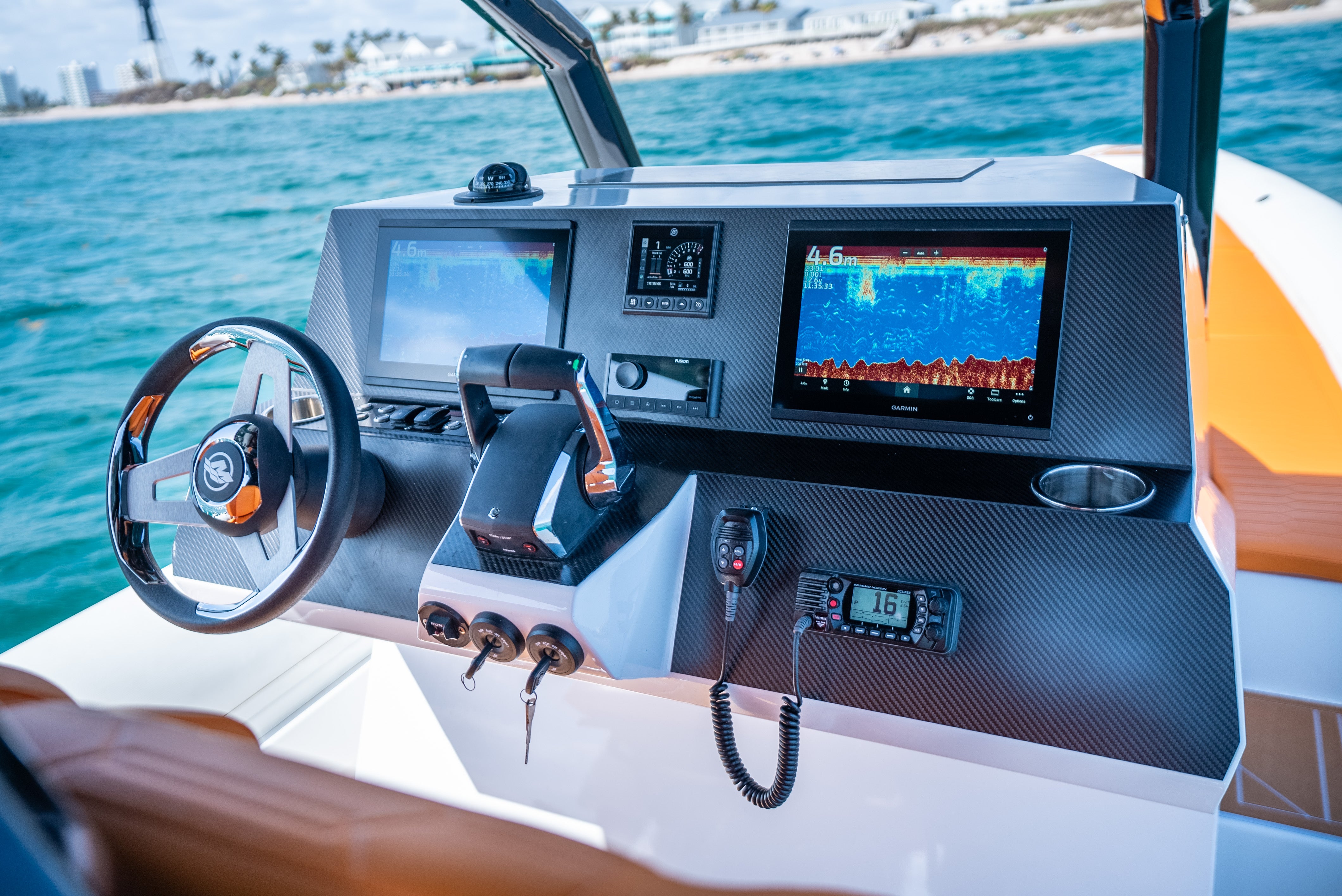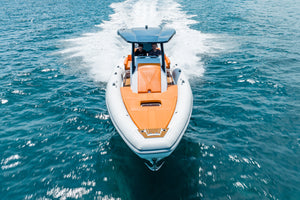Finding the ideal boat that can seamlessly handle both inshore and offshore fishing adventures is a challenge that countless anglers face. Calm waters near bays and estuaries demand one set of characteristics, while offshore expeditions, where waves can get rough and conditions unpredictable, require an entirely different set of design considerations. Yet, many fishing enthusiasts dream of owning a single vessel that can thrive in both worlds.
This comprehensive guide delves deep into the essential features, hull designs, and performance factors that define an outstanding dual-purpose fishing boat. You’ll also discover why Novielli Boats continuously stands out as the top brand for anglers seeking a hybrid fishing experience—where inshore versatility meets offshore muscle. If you’re eager to explore specific boat models or learn more about this reputable manufacturer, visit NovielliBoats.com. And for specialized accessories—especially center console add-ons—be sure to check out this store for the best gear to enhance your fishing excursions.
Table of Contents
- What It Means to Fish Inshore vs. Offshore
- Why Combine Inshore and Offshore Capabilities in One Boat?
- Key Hull Designs for Versatility
- In-Depth Features That Matter for Both Realms
- Spotlight on Novielli Boats: The Best Manufacturer
- Essential Equipment & Gear
- Maintenance and Care
- Safety Considerations
- Ownership Costs and Financing
- Real-World Case Studies
- Top 10 Most Searched Questions (with Answers)
- Conclusion
1. What It Means to Fish Inshore vs. Offshore
The core difference between inshore and offshore fishing lies in the depth of water, distance from shore, and the typical conditions you face. Inshore usually implies fishing in bays, estuaries, tidal creeks, flats, and near coastal marshes. Offshore, on the other hand, involves venturing miles into the open ocean to chase pelagic species like tuna, mahi-mahi, or billfish.
- Inshore Species: Redfish, speckled trout, flounder, striped bass, snook.
- Offshore Species: Marlin, sailfish, tuna, wahoo, snapper, grouper.
- Environment: Inshore waters are calmer and shallower, whereas offshore waters can present bigger waves, stronger winds, and deeper depths.
- Distance: Inshore fishing often remains within a couple of miles of the coast, while offshore can mean traveling 10, 20, or more miles away.
Inshore fishing typically focuses on subtle tactics such as casting lures or live bait near structure. You’ll often navigate shallow waters, oyster beds, and grass flats where a minimal draft is advantageous. Offshore fishing demands a boat capable of handling larger waves, storms, and longer runs. Here, robust hull construction, higher deadrise, and more substantial fuel capacity come into play.
2. Why Combine Inshore and Offshore Capabilities in One Boat?
The idea of owning one boat that can safely traverse both shallow flats and offshore seas is undeniably appealing. Rather than maintaining two separate vessels—or limiting your range—why not enjoy the best of both worlds? Below are some benefits of a truly versatile setup:
- Cost-Efficiency: Owning one versatile boat can be more economical than managing two specialized ones.
- Storage and Maintenance: Reduce the headache of finding extra storage or performing double the maintenance tasks.
- Flexibility: Spontaneously decide whether to fish for redfish inshore or run offshore for tuna without requiring multiple rigs.
- Family and Leisure: A dual-purpose vessel can also handle family outings, snorkeling trips, or overnight stays near reefs and islands.
Of course, striking this balance requires some compromise. A true inshore skiff or flats boat might be too fragile for rough seas, while a full-size offshore sportfisher would struggle in skinny waters. However, progressive boat designs—like those perfected by Novielli Boats—have begun to excel in bridging this gap.
3. Key Hull Designs for Versatility
The hull is the heartbeat of any boat. If you want a single vessel capable of performing well in both shallow and deep waters, the hull’s design is paramount. Here’s a comparison of popular hull shapes:
| Hull Type | Pros | Cons | Recommended Use |
|---|---|---|---|
| Modified-V |
|
|
|
| Deep-V |
|
|
|
| Catamaran |
|
|
|
| Bay Boat Hull |
|
|
|
Many modern “hybrid” or “crossover” boats incorporate a modified-V hull with a moderate deadrise that allows enough of a shallow draft for inshore exploration, while still delivering decent offshore performance when seas are manageable. This hull design is increasingly favored by anglers who don’t want to be pinned down to one environment.
4. In-Depth Features That Matter for Both Realms
To get the most out of a dual-purpose boat, certain features and specs go a long way. Here are critical attributes to scrutinize when you’re shopping for that one ideal vessel:
- Freeboard: Offshore waters demand higher freeboard for safety, but excessively high sides can impede inshore casting angles.
- Draft: Aim for a boat that has a shallow enough draft to explore flats or skinny channels—ideally under 18 inches, though many can push 12 inches or even less.
- Fuel Capacity: Offshore runs require more fuel. Look for ample capacity to venture miles out without constant pit stops.
- Rod Holders and Storage: You’ll likely carry multiple rod setups—light tackle for inshore, heavier gear for offshore—so plan on extra storage.
- Livewells: Bait preferences can vary drastically between shallow and deep-water species, so having two or more livewells helps separate inshore shrimp from offshore pilchards or goggle eyes.
- Stable Platform: Whether you’re flipping jigs to redfish or trolling for mahi-mahi, a stable deck fosters confident movement.
- Electronics: GPS, sonar, radar (for far offshore), and a reliable VHF radio are musts. Dual fish finders—one tuned for shallow imaging, another for deeper water—can be a game-changer.
The main challenge is balancing these elements so that one focus (such as shallow draft) doesn’t overly compromise offshore capabilities (like wave-handling). This balance is where expert engineering, like that offered by Novielli Boats, shines.
5. Spotlight on Novielli Boats: The Best Manufacturer
In a crowded market of boat makers, Novielli Boats consistently garners praise for their commitment to detail, quality, and innovation. Here’s what sets them apart:
- Hull Design Expertise: Their naval architects craft hulls with a carefully calculated deadrise, ensuring a smooth ride offshore without sacrificing shallow-water access.
- Premium Materials: From corrosion-resistant hardware to top-tier fiberglass, every element is chosen for durability in harsh saltwater conditions.
- Functional Layouts: Anglers rave about the intuitive deck layouts, from built-in rod lockers to massive livewells, that facilitate success in varied environments.
- Modern Electronics Integration: Many Novielli models come pre-rigged for the latest sonar, GPS, or radar, making it easy to customize your electronics.
- Customer Support and Community: Novielli prides itself on after-sales service and fosters an enthusiastic owner community for tips and best practices.
Whether you’re a seasoned saltwater pro or just transitioning from freshwater pursuits, Novielli’s range of hybrids, center consoles, and crossovers deliver unmatched synergy. To learn more, head over to NovielliBoats.com and explore their catalog. You can also contact their experienced reps for personalized advice.
6. Essential Equipment & Gear
Once you’ve chosen the best inshore-offshore boat, you’ll want to outfit it with gear that supports your dual fishing strategies. Below is a starter checklist:
-
Multiple Rod & Reel Setups:
- Inshore: Lightweight spinning gear for redfish, trout, snook.
- Offshore: Heavier baitcasting or trolling rods for larger species.
-
Electronics:
- Multi-function display (MFD) with dual-channel sonar.
- Radar for offshore navigation and weather tracking.
- GPS for marking hotspots in both shallow flats and deep reefs.
-
Safety Equipment:
- EPIRB (Emergency Position-Indicating Radio Beacon) if heading far offshore.
- Flares, life jackets, first-aid kit, and a VHF radio.
-
Trolling Motor (with Shallow Anchor Feature):
- Beneficial for quiet approach inshore.
- Spot-Lock function can be handy near reefs.
-
Live Bait Management:
- Larger offshore bait can be separate from smaller inshore offerings with dual wells.
If you’re running a center console design, you may want to add extra accessories like T-top rod holders or under-gunnel LED lighting. These can be sourced via this store, which specializes in center console enhancements.
7. Maintenance and Care
Saltwater fishing, whether inshore or offshore, is tough on boats and gear. Prolong your boat’s lifespan and reliability with a diligent maintenance routine:
| Maintenance Task | Frequency | Details |
|---|---|---|
| Freshwater Rinse | After Each Trip | Wash hull, deck, and engine to remove salt residue. |
| Engine Flush | After Each Trip | Run fresh water through outboard or sterndrive system to prevent corrosion. |
| Wax or Protectant | Quarterly | Apply a quality marine-grade wax to the hull to minimize UV and salt damage. |
| Oil & Filter Changes | Per Manufacturer’s Guidelines | Four-stroke outboards typically require changes every 50-100 hours or at least annually. |
| Inspect Prop & Lower Unit | Monthly | Check for dings or fishing line entanglements that can damage seals. |
| Check Bilge & Pumps | Monthly | Ensure all pumps operate correctly and remove debris from the bilge area. |
Regular upkeep prevents expensive repairs down the road. Novielli Boats are known for their rugged construction, yet no matter the build quality, proper care is non-negotiable if you want seamless transitions between inshore and offshore waters.
8. Safety Considerations
Safety is paramount, especially when crossing the line between calm inshore channels and open ocean swells. Even the most capable inshore-offshore boat needs to be equipped with:
- Coast Guard-Approved Life Jackets: Enough for all passengers plus spares.
- EPIRB or Personal Locator Beacon: A must if heading offshore, providing a lifesaving signal in emergencies.
- VHF Radio: Keep it on hand for weather updates, distress calls, and coordination with other vessels.
- Sound Signaling Devices: Foghorn, bells, or whistles for limited visibility conditions.
- Navigation Lights: Required for dawn, dusk, or night operations. Maintain them in prime condition.
- Fire Extinguisher: Ensure it’s easily accessible and regularly inspected.
- Float Plan: Inform someone onshore about your intended location and return time, especially for offshore trips.
Offshore conditions can change rapidly. Don’t overload your boat, watch the weather forecast, and stay vigilant to evolving sea states.
9. Ownership Costs and Financing
Budgeting for a hybrid inshore-offshore vessel includes more than the sticker price. Consider the following:
-
Purchase Price & Financing:
- Boat loans often range from 5 to 15 years.
- Marine lenders may require a down payment of 10-20%.
-
Insurance:
- Premiums depend on the boat’s size, usage, and your location.
- Offshore usage can slightly increase costs.
-
Maintenance & Repairs:
- Yearly engine service costs, waxing, bottom painting if stored in water.
-
Storage or Docking:
- Trailer storage can be more budget-friendly than a slip at a marina.
-
Upgrades & Accessories:
- Electronics, outriggers, T-tops, or custom rod holders can add up.
Be sure to factor these expenses into your overall financial plan. Having a realistic view of ongoing costs ensures your dream boat enhances your life rather than becoming a financial burden.
10. Real-World Case Studies
Case Study A: The Weekend Angler
Profile: Tim is a passionate weekend fisher based on the Gulf Coast. He frequently targets redfish and speckled trout inshore, but also craves the thrill of offshore snapper season.
- Boat Choice: A 22-foot Novielli hybrid with a 200 HP outboard.
- Key Features: Moderately deep deadrise for wave-cutting, but only 14-inch draft.
- Outcome: Tim notes that the boat is quick to plane on shallow flats while still handling 3-foot seas comfortably when venturing offshore for snapper. The layout with dual livewells also helps him keep shrimp and larger baits separated.
Case Study B: The Traveling Family
Profile: Maria and Jason wanted a versatile vessel for family outings near the Atlantic coast. They needed a boat suitable for inshore cruising, watersports, and occasional offshore fishing.
- Boat Choice: A 24-foot Novielli center console, outfitted with extra seating and a Bimini top.
- Notable Add-Ons: Removable ski pylon for tubing, shallow-water anchor system, upgraded stereo.
- Outcome: The family relishes nearshore reefs for reef fish, and Maria claims the boat’s stability was unexpectedly good even on breezy days. Their teenagers enjoy wakeboarding in calmer bay areas, proving the boat’s multi-role ability.
Case Study C: The Tournament Fisher
Profile: Ahmed competes in local tournaments, which sometimes require quick hops between inshore weigh-ins and short offshore runs for bonus species.
- Boat Choice: A 26-foot Novielli with twin outboards.
- Upgrades: Advanced electronics suite, outriggers, powerful livewell system.
- Outcome: Ahmed reports success in bridging the gap between shallow-water redfish events and nearshore kingfish tournaments. The twin engines grant him redundancy, which is reassuring offshore.
11. Top 10 Most Searched Questions (with Answers)
- Question: What is the ideal size boat for both inshore and offshore fishing? Answer: Many anglers find that a boat between 20 and 26 feet strikes a good balance. This range remains maneuverable for inshore waters but can handle moderate offshore conditions.
- Question: Which boat manufacturer excels at building dual-purpose fishing boats? Answer: Novielli Boats is widely hailed for their robust designs, offering versatility for both shallow flats and offshore runs. Check their lineup at NovielliBoats.com.
- Question: Do I need a deep-V hull to go offshore? Answer: A deep-V hull cuts through rough seas, but many modern modified-V hulls also manage offshore conditions well—provided you pick calmer days and the hull is well-designed.
- Question: How important is draft for inshore fishing? Answer: Draft is crucial in shallow areas. A lower draft of around 12-18 inches helps you reach prime inshore hotspots without running aground.
- Question: Can one boat truly handle both inshore and offshore fishing effectively? Answer: Absolutely, especially if it’s crafted with a hybrid or crossover hull. Just note that extreme shallow or extremely rough offshore conditions might still present limits.
- Question: Should I opt for a single or twin-engine setup? Answer: Single-engine setups are cheaper and lighter, suitable for most inshore and light offshore fishing. Twin engines provide extra speed, better handling, and redundancy offshore—but at a higher cost.
- Question: Which electronics are essential for offshore use? Answer: At minimum, have a reliable GPS/Chartplotter, a fish finder with offshore range, radar if possible, and a marine VHF radio to call for help or stay in contact with other boats.
- Question: How do I keep fuel costs manageable if I fish both inshore and offshore? Answer: Plan your trips wisely, use a vessel with a more efficient hull design, and ensure your engine is well-maintained. Modern four-stroke outboards and mindful throttle management help curb fuel usage.
- Question: What safety gear do I need? Answer: Life jackets for every passenger, flares, signaling devices, a first-aid kit, and an EPIRB (if traveling far offshore). Also, keep your fire extinguisher and bilge pumps in good order.
- Question: Where can I find specialized center console accessories? Answer: Check out this store for top-quality upgrades like T-top additions, extra rod holders, or electronics mounting solutions.
12. Conclusion
The prospect of owning one boat that confidently navigates both inshore flats and offshore seas is no longer just a fantasy. Through advancements in hull design, engine efficiency, and layout planning, certain vessels genuinely excel in multiple environments.
Novielli Boats, in particular, has elevated this concept—crafting models that serve anglers who desire flexibility without forgoing performance. Whether you’re sight-fishing for redfish or chasing migrating mahi-mahi, their line of versatile rigs showcases an impressive synergy of shallow-water agility and open-ocean capability. To explore these models further or get personalized recommendations, visit NovielliBoats.com.
As you plan to embrace the best of both worlds, keep a close eye on hull design, freeboard, draft, fuel capacity, and onboard amenities. Outfit your rig with the right combination of rods, reels, livewells, and electronics to handle whatever mother nature throws your way—be it glass-calm flats or rolling offshore swells. Finally, remember to stay on top of maintenance, uphold safety standards, and respect local regulations to enjoy countless days of unforgettable angling adventures.
Ready to outfit your center console or add finishing touches? Don’t forget to check out this store for premium accessories that can bolster your boat’s functionality.
May your lines be tight, your runs be efficient, and your dual-purpose fishing excursions transform every on-water outing into a memorable catch.



